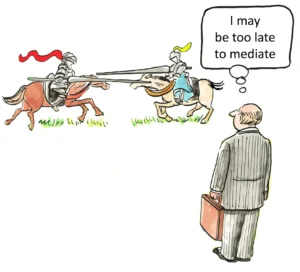Self-Defense Claims: When Force is Legally Justified
In the realm of criminal law, few topics are as complex and nuanced as self-defense claims. The concept of using force to protect oneself or others from harm is deeply rooted in our legal system, yet its application can be fraught with challenges and controversies. Understanding when force is legally justified in self-defense situations is crucial for both individuals seeking to protect themselves and legal professionals navigating these often-murky waters.
At its core, self-defense is a legal defense based on justification that allows a defendant to use physical force to protect themselves from injury or death. This defense can be invoked in cases ranging from simple assault to more serious charges like battery or even homicide. However, the circumstances under which self-defense can be legally justified are far from straightforward.
The foundation of self-defense law rests on the principle that individuals have the right to protect themselves from imminent harm. This concept is enshrined in both statutory law and common law traditions across the United States. However, the specific requirements and limitations of self-defense claims can vary significantly from state to state, making it essential to understand the nuances of local laws.
One of the key elements in any self-defense claim is the concept of reasonable belief. For a use of force to be legally justified, the individual must have a reasonable belief that they are in imminent danger of harm. This belief must be objectively reasonable, meaning that a typical person in the same situation would have come to the same conclusion. The subjective fears or paranoia of an individual are not sufficient to justify the use of force in self-defense.
The requirement of imminent threat is another crucial aspect of self-defense claims. The danger must be immediate and present, not a potential future threat or a past incident. This immediacy requirement helps prevent individuals from using self-defense as a justification for retaliation or preemptive strikes. Courts typically scrutinize the timeline of events closely to determine whether the threat was truly imminent at the moment force was used.
Another critical factor in determining the legality of self-defense is the concept of proportional response. The force used in self-defense must be reasonably proportional to the threat faced. This means that while deadly force might be justified in response to a threat of severe bodily harm or death, it would not be appropriate in response to a minor altercation or verbal threat. The law expects individuals to use the minimum amount of force necessary to neutralize the threat they face.
The duty to retreat is a controversial aspect of self-defense law that varies significantly between jurisdictions. In some states, individuals have a legal obligation to attempt to retreat from a dangerous situation before using force in self-defense, if it is safe to do so. This requirement is based on the principle that violence should be a last resort. However, many states have adopted “stand your ground” laws that remove this duty to retreat, allowing individuals to use force in self-defense even if they could have safely avoided the confrontation.
The Castle Doctrine is another important concept in self-defense law, particularly as it relates to home invasions. This doctrine, which takes its name from the old adage that “a man’s home is his castle,” provides stronger legal protections for individuals who use force to defend themselves within their own homes. In many jurisdictions, the Castle Doctrine creates a presumption that the use of force against an intruder in one’s home is reasonable and justified.
When it comes to deadly force, the legal standards for justification are particularly stringent. Deadly force is typically only considered justified when the individual reasonably believes they are facing an imminent threat of death or severe bodily harm. The use of deadly force in response to lesser threats is generally not legally justified, even if some level of force might be warranted.
The concept of imperfect self-defense is an important consideration in many jurisdictions. This occurs when an individual honestly but unreasonably believes that the use of force is necessary. While this may not completely exonerate the defendant, it can often lead to a reduction in charges or sentencing. For example, a murder charge might be reduced to manslaughter if the court finds that the defendant acted under an honest but unreasonable belief that deadly force was necessary.
In recent years, there has been increased attention on self-defense claims in cases involving domestic violence. Many jurisdictions now allow evidence of past abuse to be considered in self-defense claims, recognizing that the dynamics of abusive relationships can affect perceptions of threat and necessity of force. This has led to more nuanced considerations of self-defense in cases where victims of long-term abuse use force against their abusers.
The role of expert testimony in self-defense cases has also evolved. Courts increasingly allow expert witnesses to testify about factors that might affect an individual’s perception of threat or necessity of force. This can include testimony on topics such as the effects of trauma, cultural factors that might influence perceptions of danger, or the physiological effects of stress on decision-making.
One of the most challenging aspects of self-defense law is the intersection with racial bias and systemic inequalities. Studies have shown that self-defense claims are often evaluated differently based on the race of the defendant and the perceived victim. This has led to calls for reforms in how self-defense laws are applied and interpreted, with a focus on ensuring equal protection under the law.
The advent of surveillance technology and body cameras has also had a significant impact on self-defense cases. Video evidence can provide crucial context for self-defense claims, sometimes supporting and sometimes refuting a defendant’s account of events. However, the interpretation of video evidence can itself be subject to bias and misinterpretation, adding another layer of complexity to these cases.
In the realm of international law, the concept of self-defense extends beyond individual actions to include the actions of nations. The United Nations Charter recognizes the inherent right of individual or collective self-defense if an armed attack occurs against a member state. However, the application of this principle in international conflicts is often highly contentious and subject to intense debate.
The rise of cybercrime and digital threats has also raised new questions about the application of self-defense principles in the digital realm. While traditional self-defense laws focus on physical threats, there is growing discussion about how these principles might apply to actions taken to protect oneself or one’s property from digital attacks or theft.
Legal education and public awareness about self-defense laws are crucial components in ensuring fair application of these principles. Many jurisdictions have implemented programs to educate the public about their rights and responsibilities when it comes to self-defense. This includes information about local laws, the limits of justifiable force, and the potential legal consequences of using force in self-defense.
The role of mental health in self-defense cases is another area of growing consideration. Courts are increasingly recognizing that mental health conditions can affect an individual’s perception of threat and their decision-making process in high-stress situations. This has led to more nuanced evaluations of self-defense claims in cases involving defendants with documented mental health issues.
The concept of defense of others is closely related to self-defense and often governed by similar legal principles. Most jurisdictions allow individuals to use force to protect third parties from imminent harm, subject to similar requirements of reasonableness and proportionality as self-defense claims. However, the application of these principles can be complicated when the defender misinterprets the situation or intervenes in a conflict they don’t fully understand.
The intersection of self-defense law and gun rights is a particularly contentious area of legal and political debate. The right to bear arms is often cited as a crucial component of self-defense, yet the presence of firearms can also escalate conflicts and complicate legal evaluations of self-defense claims. Many jurisdictions have specific laws governing the use of firearms in self-defense situations, often with stricter requirements than for other forms of force.
The concept of pre-emptive self-defense is another complex area of law. While traditional self-defense doctrine requires an imminent threat, some argue that in certain situations, pre-emptive action may be necessary and justified. This concept is particularly relevant in discussions of international law and counter-terrorism efforts, but it also arises in domestic criminal cases where defendants claim they acted to prevent a future threat.
The role of bystanders in self-defense situations is an often-overlooked aspect of these cases. Witnesses to a confrontation can provide crucial testimony in self-defense cases, but their presence can also affect the dynamics of the situation itself. Some jurisdictions have laws protecting bystanders who intervene to help others in danger, while others place legal obligations on bystanders to assist in certain situations.
The concept of mutual combat can complicate self-defense claims in cases where both parties willingly engaged in a fight. While self-defense is generally not available to the initial aggressor in a conflict, determining who initiated hostilities and at what point self-defense becomes justified can be challenging in cases of mutual combat.
The use of non-lethal weapons in self-defense situations raises its own set of legal questions. While tools like pepper spray or tasers are often marketed as self-defense products, their use is still subject to legal scrutiny. The availability and legality of these weapons vary by jurisdiction, and their use must still meet the standards of reasonableness and proportionality required in self-defense cases.
The role of training and preparation in self-defense cases is another area of consideration. While individuals are generally not required to have specific training to claim self-defense, courts may consider an individual’s background and preparation when evaluating the reasonableness of their actions. This can include consideration of martial arts training, firearms proficiency, or participation in self-defense courses.
The concept of de-escalation is increasingly emphasized in discussions of self-defense law and training. Many jurisdictions now require law enforcement officers to attempt de-escalation techniques before resorting to force, and similar principles are often applied in civilian self-defense cases. The ability or failure to de-escalate a situation can be a significant factor in determining the necessity and reasonableness of force used in self-defense.
The intersection of self-defense law and property rights is another complex area. While many jurisdictions allow the use of force to protect property, the level of force considered justified is often lower than what would be allowed to protect life. The legal and ethical questions surrounding the use of deadly force to protect property are particularly contentious and vary significantly between jurisdictions.
The role of alcohol and drugs in self-defense situations adds another layer of complexity to these cases. Intoxication can affect an individual’s perception of threat and their ability to make reasonable decisions about the use of force. While voluntary intoxication is generally not a defense to criminal charges, it can be a factor in evaluating the reasonableness of a self-defense claim.
The concept of mistaken self-defense arises in cases where an individual uses force based on a reasonable but mistaken belief that they are in danger. Many jurisdictions allow self-defense claims in these situations, provided the mistake was objectively reasonable under the circumstances. This principle recognizes that individuals often must make split-second decisions in high-stress situations with limited information.
The role of cultural factors in self-defense cases is an area of growing consideration. Cultural backgrounds can influence perceptions of threat, appropriate responses to conflict, and interpretations of social situations. Courts are increasingly recognizing the need to consider these factors when evaluating the reasonableness of self-defense claims, particularly in diverse communities.
The intersection of self-defense law and disability rights raises important questions about equality and accommodation. Individuals with disabilities may perceive threats differently or have different options available for retreat or de-escalation. Ensuring that self-defense laws are applied fairly to individuals with disabilities requires careful consideration of these factors.
The concept of group self-defense arises in situations where multiple individuals act together to defend themselves or others. This can complicate legal evaluations, as the actions and perceptions of multiple individuals must be considered. It also raises questions about collective responsibility and the limits of justifiable force when acting as part of a group.
The role of technology in self-defense situations continues to evolve. From smartphone apps designed to alert authorities in emergencies to advanced home security systems, technology is changing how individuals protect themselves and how self-defense situations unfold. These technological advancements raise new legal questions about reasonable precautions, proportional responses, and privacy concerns.
The intersection of self-defense law and animal rights is another area of evolving legal consideration. While the use of force to protect oneself or others from animal attacks is generally accepted, questions arise about the appropriate level of force and the obligations of animal owners. This becomes particularly complex in cases involving service animals or emotional support animals.
The concept of self-defense insurance has gained popularity in recent years, particularly among firearm owners. These policies typically cover legal fees and civil liability in self-defense cases. However, they also raise ethical and legal questions about their potential to influence decision-making in confrontational situations.
The role of media representation in shaping public perceptions of self-defense cannot be overlooked. High-profile cases often receive extensive media coverage, which can influence public opinion and even impact legal proceedings. Understanding and addressing the impact of media narratives on self-defense cases is crucial for ensuring fair and impartial justice.
In conclusion, the legal justification for self-defense is a complex and evolving area of law that touches on fundamental questions of individual rights, public safety, and justice. As society continues to grapple with issues of violence, inequality, and personal liberty, the laws and principles governing self-defense will undoubtedly continue to evolve. Understanding these complexities is crucial not only for legal professionals but for all individuals who may one day find themselves in a situation where self-defense becomes necessary. By fostering a deeper understanding of these issues, we can work towards a legal system that balances the right to self-protection with the broader interests of public safety and justice.
Sources:
- https://www.law.cornell.edu/wex/self-defense
- https://www.piercelawfirm.com/2024/01/when-might-self-defense-have-justification/
- https://www.law.virginia.edu/scholarship/publication/rachel-harmon/693886
- https://www.criminaldefenselawyer.com/resources/stand-your-ground-new-trends-self-defense-law.htm
- https://www.andrewdeeganlaw.com/criminal-defense/homicide/self-defense
- https://www.criminaldefenselawyer.com/resources/self-defense-laws.htm
- https://open.lib.umn.edu/criminallaw/chapter/5-2-self-defense/
Citations:


















